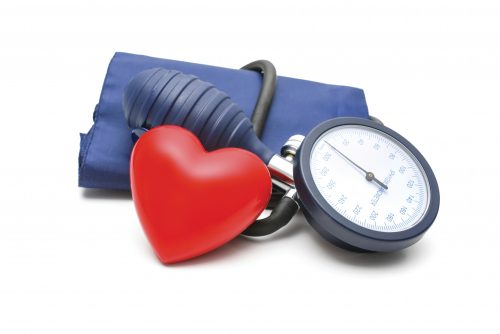
Health professionals talk about managing cholesterol levels to reduce the risk of heart disease, but what is cholesterol, how much is too much and what can we do about it? Dietitian Jacqueline Yip from the Auckland Public Health Service explains.
Latest evidence
What does the latest evidence say about improving cholesterol and lowering the risk of heart disease?
In the past, a lot of research has been done on high cholesterol as a strong risk factor for heart disease, and many dietary recommendations that came out of this research centred on limiting intake of saturated fats (those in animal fats, for example) and cholesterol (in eggs, for example) as they were thought to raise cholesterol levels.
However, evidence continues to evolve with new findings. We now know that cholesterol in foods has a smaller influence on cholesterol in our bodies than we thought. Many dietary guidelines have removed the recommendation to reduce cholesterol intake to reflect that.
Researchers and health professionals have also shifted focus from individual risk factors and nutrients towards a broader approach as they acknowledge that heart disease is a complex thing and people don’t eat nutrients — they eat food.
Broader approach
Instead of concentrating solely on cholesterol as an indicator of heart disease risk, health professionals now take a more comprehensive approach. When your doctor determines your heart disease risk, they will also consider your gender, blood pressure, if you smoke or not and whether you have type 2 diabetes.
Similarly, managing cholesterol levels is part of a whole approach to reduce the risk of heart disease. There is less focus on simply cutting out or increasing single foods and more on the whole pattern of a person’s eating and drinking. Research has found that cutting down on foods high in saturated fat and replacing them with refined grains (eg white bread) has no real benefit to heart health. However, there is evidence that cutting saturated fats such as butter, cream and fatty meat and replacing them with unsaturated fats such as olive or vegetable oil can reduce the risk of heart disease.
Which means…?
What does all this mean if I want to manage my cholesterol and lower my risk of heart disease?
Researchers looked at the diets of different groups around the world who live long and healthy lives and came up with common themes which lead to these recommendations:
- Maximise plant-based foods, especially vegetables and fruit
- Swap some meat for legumes (eg beans and lentils) and nuts
- Replace refined grains (eg white bread, white rice) with whole grains (eg oats, barley) as much as possible
Use healthy fats such as oily fish, avocado, nuts and oils in place of animal fats. For example, use olive oil or reduced-fat spread instead of butter for cooking, or try spreading mashed avocado on toast instead of butter.
The Mediterranean diet is a great example of heart-healthy eating that includes all of these — lots of fresh fruits and vegetables with good amounts of healthy olive oil and oily fish, and smaller amounts of meat. The main thing to remember is to make sure it works for you and your lifestyle.
What else can I do?
Heart-healthy eating is only one part of improving your cholesterol levels and risk of heart disease. Others include becoming smoke free, moving more, reaching and maintaining a healthy weight and managing stress and diabetes. You can also talk to your doctor about medications and complementary or traditional therapies.
You can forecast the age of your heart at My Heart Check (myheartcheck.org.nz).
What is cholesterol?
Cholesterol is a substance in our bodies that’s integral to healthy cell membranes, hormone production and fat processing. The liver is the main source of cholesterol, with the rest coming from our cells and diet.
‘Good’ and ‘bad’ cholesterol
You may have heard that there are two types of cholesterol – LDL (often referred to as ‘bad’ cholesterol) and HDL (‘good’ cholesterol). But these are not actually cholesterol — rather, they are lipoproteins (made of proteins and fats) which carry cholesterol and other fats around in the blood. It is where they end up transporting the cholesterol that makes them ‘bad’ or ‘good’.
HDL clears cholesterol from our blood vessels and takes it back to the liver for processing. LDL does the opposite; it takes cholesterol from the liver to our organs via the blood vessels. It’s prone to depositing some of the cholesterol on blood vessel walls on the way, which can lead to fatty build-up and, subsequently, narrowed arteries. Blood vessels may also start to lose elasticity due to this build-up and become stiff. These changes can make it difficult for enough blood to flow and reach our organs, thereby increasing the risk of heart disease.
Therefore, we want to aim for low levels of total and LDL-cholesterol in our blood, and high levels of HDL-cholesterol. These are the target cholesterol levels for people at risk of cardiovascular disease.
- Total cholesterol – less than 4.0 mmol/L
- LDL-cholesterol – less than 2.0 mmol/L
- HDL-cholesterol – 1.0 mmol/L or more
- Total cholesterol to HDL ratio – less than 4
So what pushes our cholesterol above recommended healthy levels?
Causes include genetic conditions such as familial hypercholesterolaemia, pregnancy and lifestyle factors such as poor diet, smoking, lack of physical activity and stress.
Article sources and references
- Heart Foundation. High cholesterol www.heartfoundation.org.nz/knowthe- facts/conditions/highcholesterol Accessed June 2015https://www.heartfoundation.org.nz/wellbeing/managing-risk/managing-high-cholesterol/
- Katz DL & Meller S. 2014. Can we say what diet is best for health? Annual Review of Public Health 83-103https://www.annualreviews.org/doi/10.1146/annurev-publhealth-032013-182351
- Micha R & Mozaffarian D. 2010. Saturated fat and cardiometabolic risk factors, coronary heart disease, stroke, and diabetes: a fresh look at the evidence. Lipids 45:893-905https://www.ncbi.nlm.nih.gov/pubmed/20354806
- Mozaffarian D et al. 2010. Effects on coronary heart disease of increasing polyunsaturated fat in place of saturated fat: a systematic review and metaanalysis of randomized controlled trials. PLoS medicine 7, e1000252https://www.ncbi.nlm.nih.gov/pubmed/20351774
- New Zealand Guidelines Group. New Zealand Primary Care Handbook 2012. 3rd ed. Wellington: New Zealand Guidelines Grouphttps://www.health.govt.nz/publication/new-zealand-primary-care-handbook-2012
- Nutrition Evidence Library. 2014. A series of systematic reviews on the relationship between dietary patterns and health outcomes. US Department of Agriculture www.nel.gov/ publicationshttps://www.fns.usda.gov/cnpp/center-nutrition-policy-and-promotion
www.healthyfood.com










